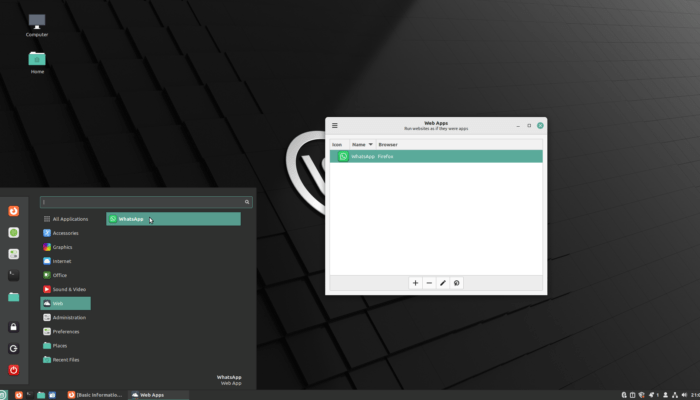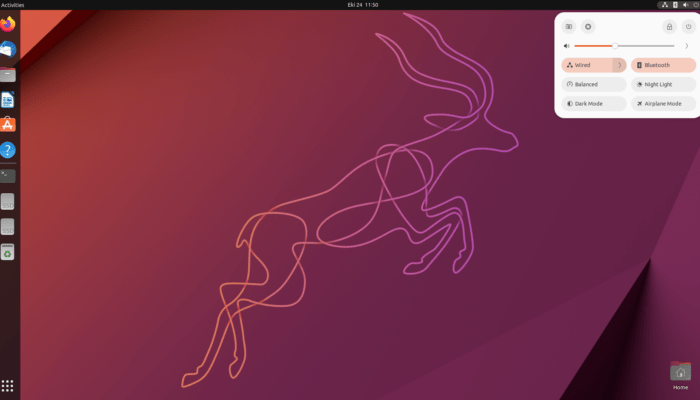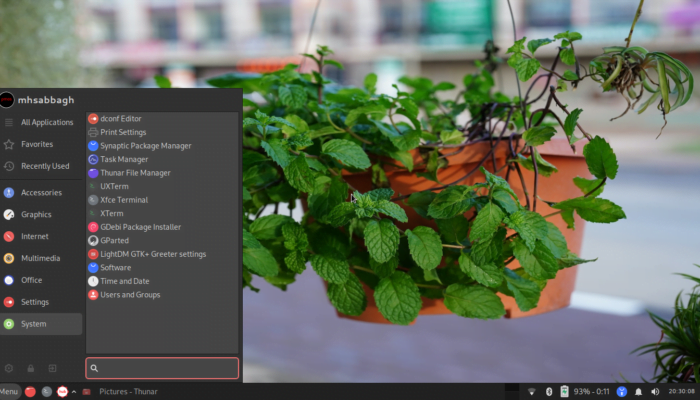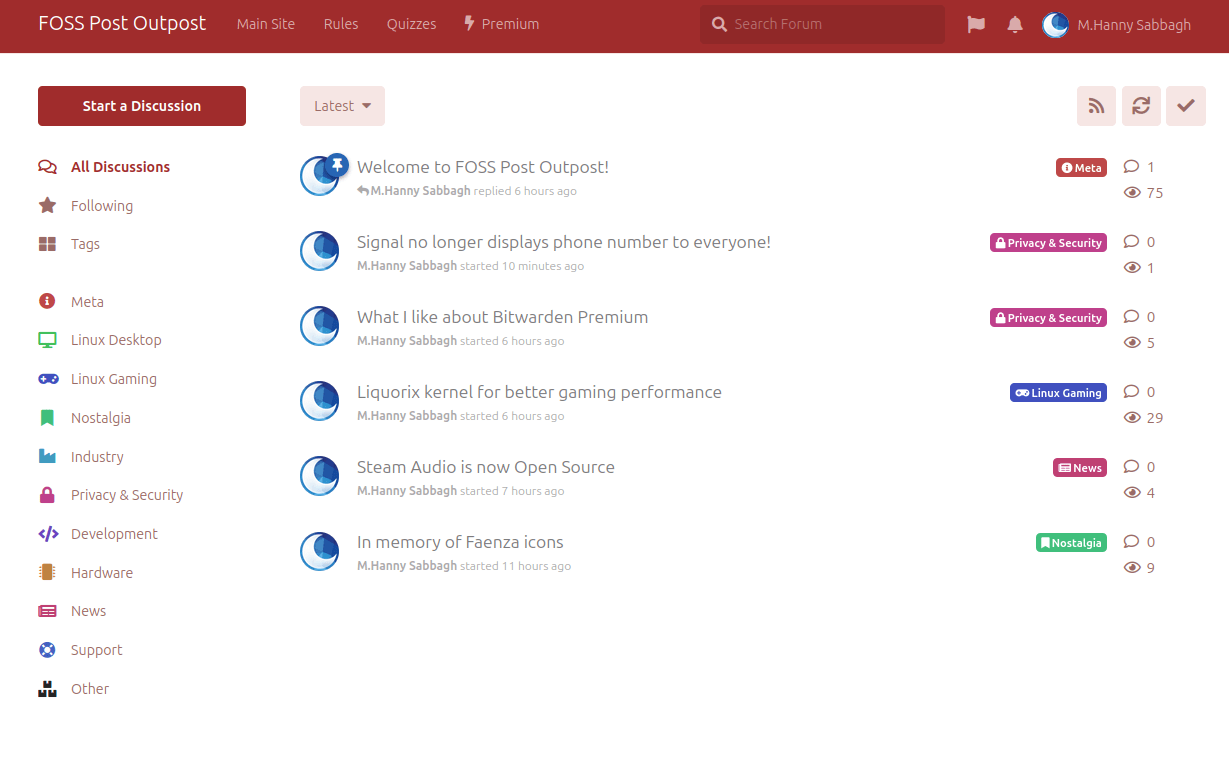Table of Contents:
Pop!_OS 22.04
-
Available software
-
Creativity & Inventing
-
Daily Use Purposes
-
Stability & Bugs
-
Customizability
Summary
Pop!_OS 22.04 is a fantastic Linux distribution which has been heavily modified to provide the best experience for power users. It ships with a lot of custom software and tweaks, making it one of the best Ubuntu derivatives out there.
Although mainly developed by System76 for their own hardware that they sell, it can be used like any other normal distribution on any suitable hardware. Additionally, many users report that it was able to revive their older hardware thanks to the CPU tweaks done on it.
It has a fantastic future as one of the best Linux distributions out there for professionals and creators.
Pros
- Customized Linux desktop, allowing a more efficient management of activities.
- Tiling windows support out-of-the-box.
- Keyboard shortcuts for everything, which is a big plus for keyboard-driven people.
- Graphics drivers are automatically installed, with the possibility to toggle dedicated/integrated GPU when needed.
- Nice default theme and fonts.
- Under-the-hood changes for CPU performance and desktop responsiveness.
- Full disk encryption automatically during installation.
- Flatpak and Flathub support out-of-the-box in the software center.
Cons
- Fractional scaling has bugs, on some AMD hardware at least, but this is not limited to this distribution.
- Not very great documentation for the work implemented, or the current state of development.
It’s that time of the year again, where we have to choose the best Linux distribution released so far.
As a reminder, each year at FOSS Post we select the best desktop Linux distribution released according to specific criteria, such as:
- The distribution’s ability to work as a daily driver for the average Linux user.
- The distribution’s ability to be used directly after installation, without need for much tweaking and configuration from the user side.
- The available software packages in the distribution repositories.
- The limited number of software bugs and system issues.
- The hardware resources consumption of the distribution after a fresh installation, should not be high, and should be suitable for most desktops/laptops out there.
- Not requiring prior experience to use it.
There have been many good Linux distributions released in 2022, which satisfy many of these criteria, like:
- Linux Mint 21.1 (and Linux Mint 21) which comes with upgraded eyecandy and user interface.
- Manjaro 22.0, which ships with the newly-released Xfce 4.18 desktop.
- MX Linux 21.2, which serves as an updated installation media for MX Linux 21.
- Ubuntu 22.10 which transitioned to Pipewire, GNOME 42.
- Honorable mentions include openSUSE 15.4 and Peppermint 2022-02-02.
Our previous winners in the last years were:
- 2019: Ubuntu MATE 19.10.
- 2020: Linux Mint 20.
- 2021: MX Linux 21.
Today, we are glad to announce that Pop!_OS 22.04 is our selection for the best Linux desktop distribution released in 2022!
And in this subtle review, you will be reading our reasons for choosing Pop!_OS.
Pop!_OS 22.04 Review
General Background
Pop!_OS is a Linux distribution developed by the System76 company, mainly for the computers, laptops and mini-PCs they manufacture and sell.
But the distribution can also be installed on any hardware, just like any normal Linux distribution. After all, it is based on Ubuntu.
We have to admit that one of the reasons for not reviewing Pop!_OS on FOSS Post for many years was that we thought of it as a “factory” Linux distribution; a distribution which is there just because the hardware manufacturer didn’t want to use another distribution in the market, so they changed the logos and backgrounds and threw small changes in the OS and called it a day.
However, release after release, the distribution is no longer a marketing distribution by a hardware manufacturer; instead, it became a fully-fledged distribution with so many features and differences from its parent Ubuntu, just like Linux Mint and others.
If this is the first time you hear about the distribution then you don’t have to worry; it is still Ubuntu, but tweaked and supplied with many additions to make it suitable for power users out-of-the-box.
COSMIC Desktop
The first thing that catches the eye after installation is the unique desktop.

COSMIC, a modified version of the popular GNOME desktop, looks quite familiar and similar to the desktop it was forked from, but there are many changes:
- The dash overview has been separated to different parts that can be individually called, such as applications, workspaces navigator and software launcher.
- There is an annoying dock on the bottom of the screen, just like a macOS.
- Tiling windows support and keyboard shortcuts are all over the place.
By default you don’t get a one place to view all of these things on Pop!_OS, instead, they are in different places. Workplaces for example can be reached either by a keyboard shortcut, from the dock or from the top bar:

Hitting the “Super” key, or clicking the application launcher from the dock will allow you quickly launch any software you want on your system. You can also navigate between currently opened windows using it:
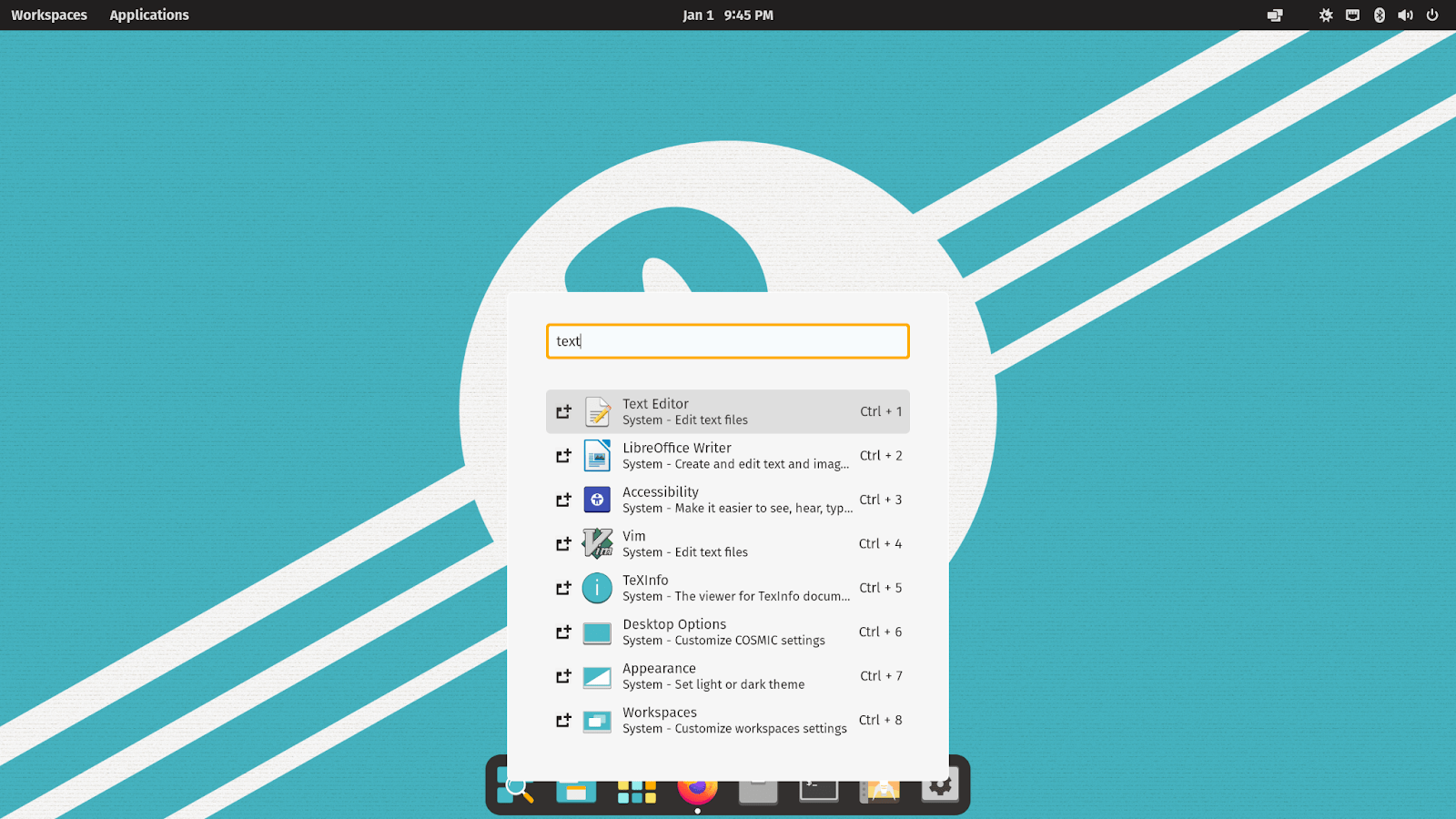
The application drawer is displayed not as a full window size like in the original GNOME, but as a smaller contained window that can be navigated according to categories:

Pop!_OS is such a quite suitable distribution for keyboard-driven people.
Everything has a shortcut and window tilling is supported. Window tiling means that the opened applications menu on the desktop are not allowed to overlap, and each window’s size is distributed according to “tiles” the user tweaks however he/she likes.
There is an icon on the top bar to enable and configure tiling windows options:
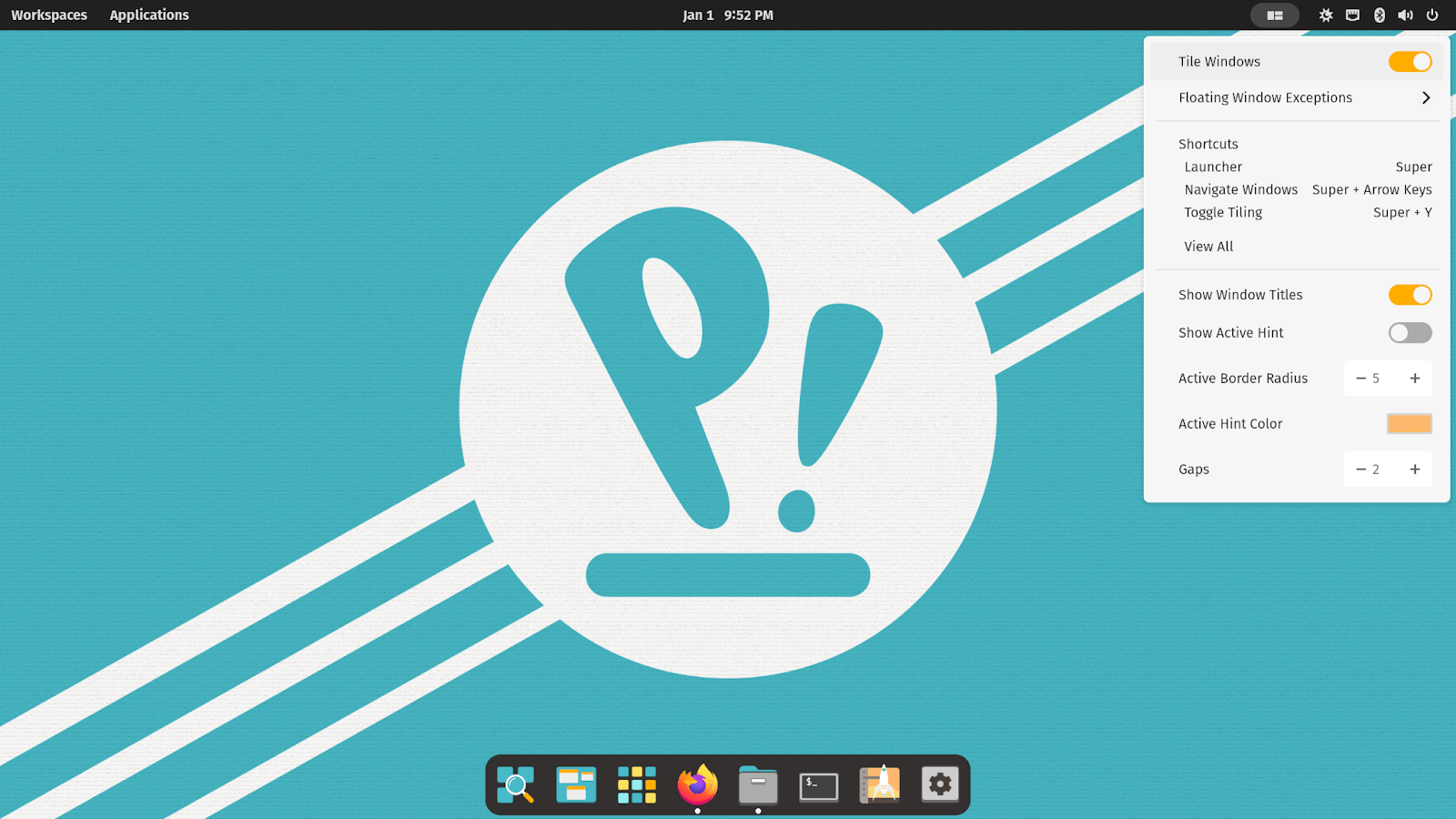
Which would allow you to play with it however you like:

You can also view keyboard shortcuts available for tiling windows:
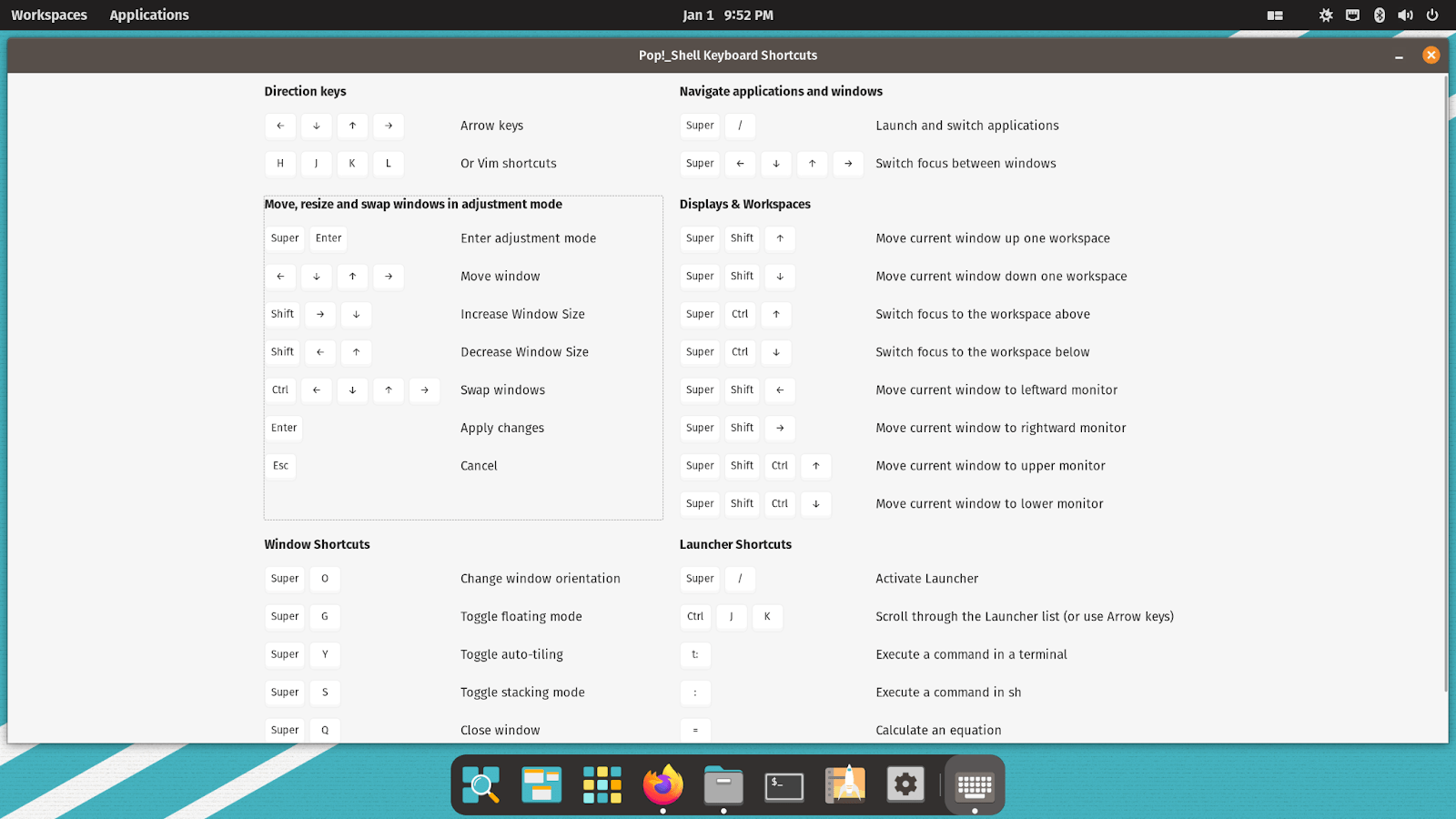
If you are a mouse-driven person, like me, then you don’t need to worry. You can just keep this feature disabled and use your OS the normal way like we 1998 people have been doing for our whole lives. After all, some change is just not good for the human health 😏
But yea, keyboard hackers would love such features.
Software Management
The software center in Pop!_OS 22.04 is actually forked from elementaryOS software center, but on the contrary, it’s not equally empty of software.
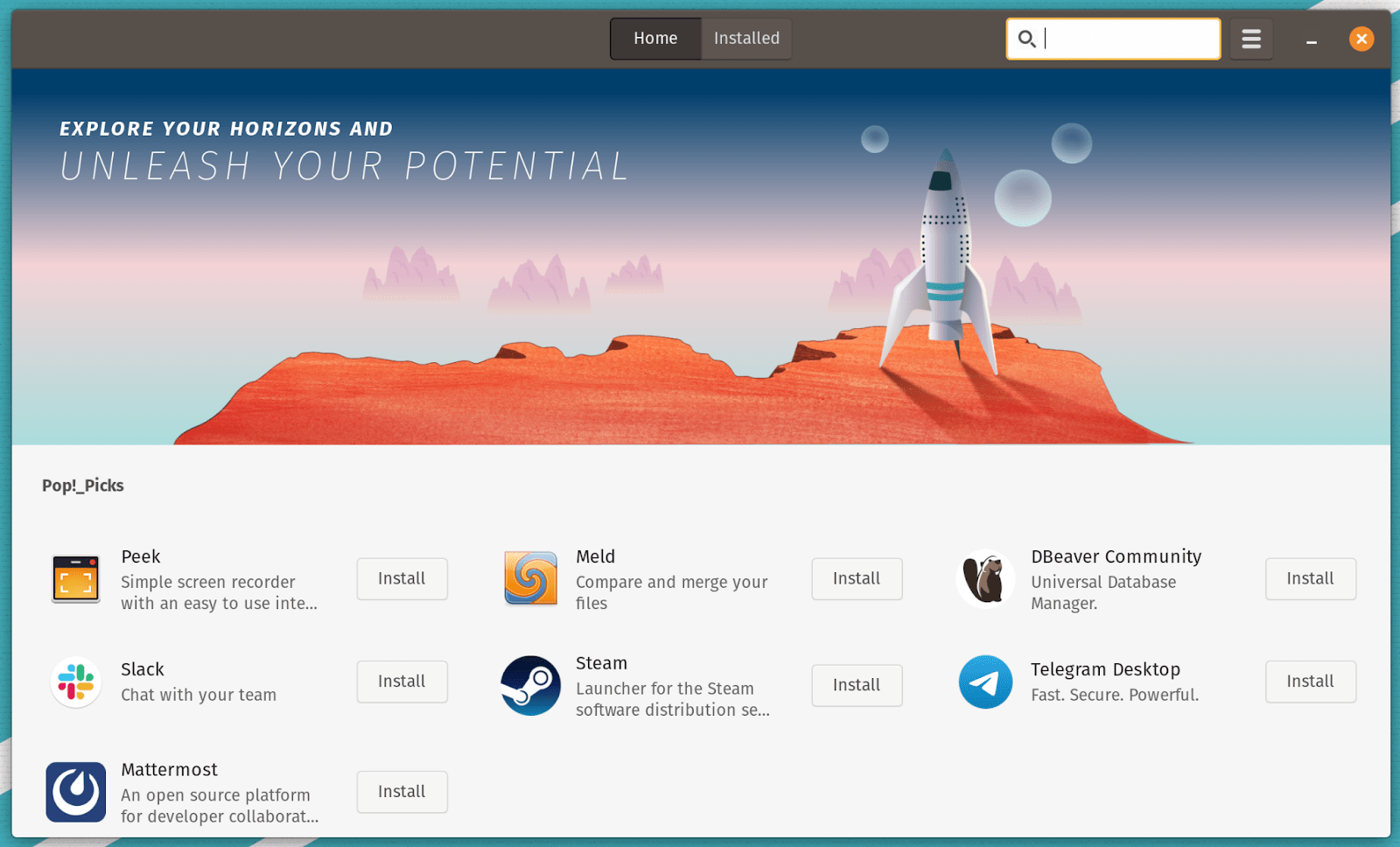
The distribution does not use the base Ubuntu repositories by default. Instead, it uses System76’s own mirrors:
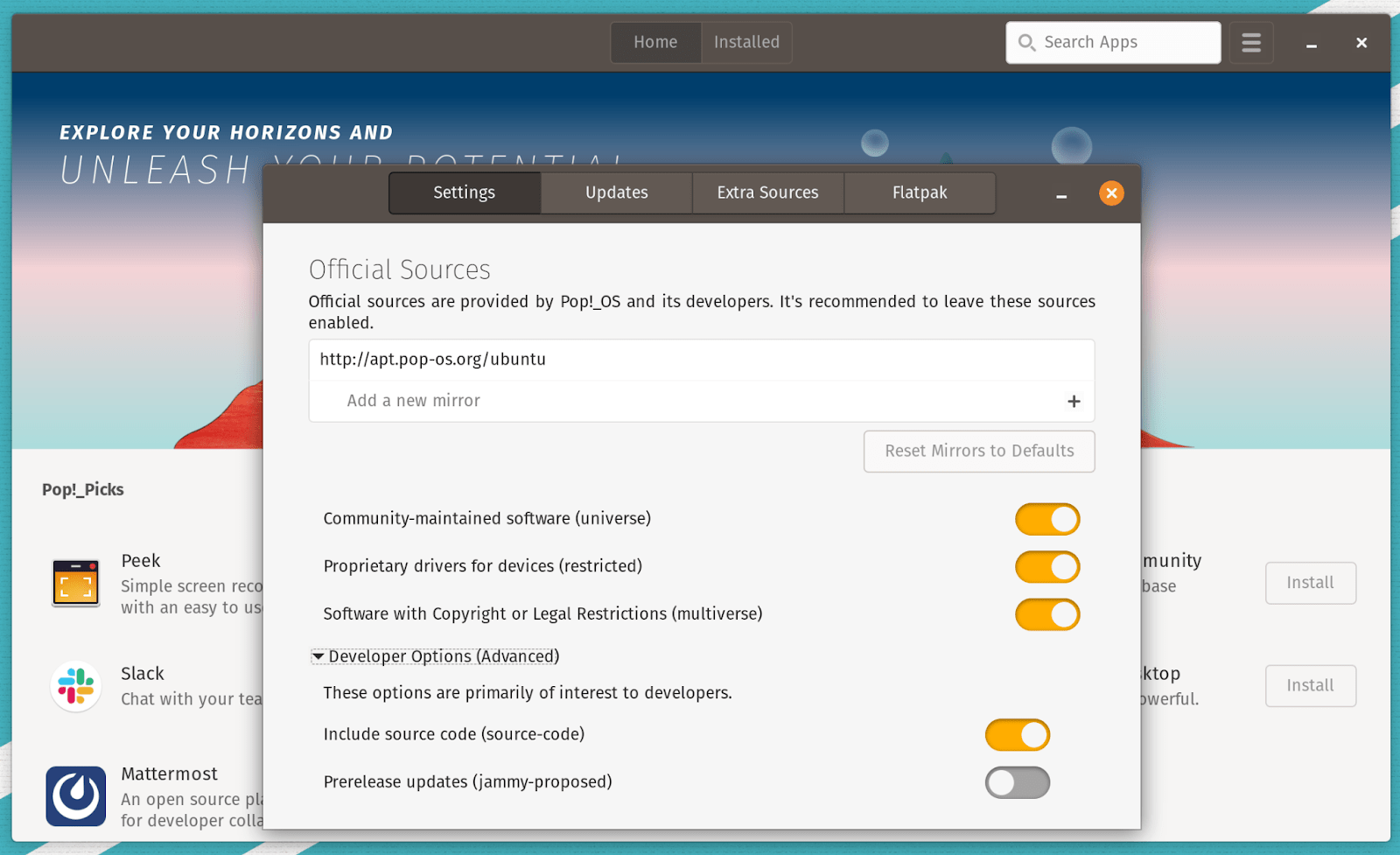
Just like Linux Mint, Pop!_OS developers have opted for using Flatpak by default on their distribution instead of Snaps, which was used by default in Ubuntu. A wise decision, to be honest, especially for how the Firefox Snap is currently performing in terms of stability and performance.
Even Flathub is added as an activated repository, so that you can directly install software from it:
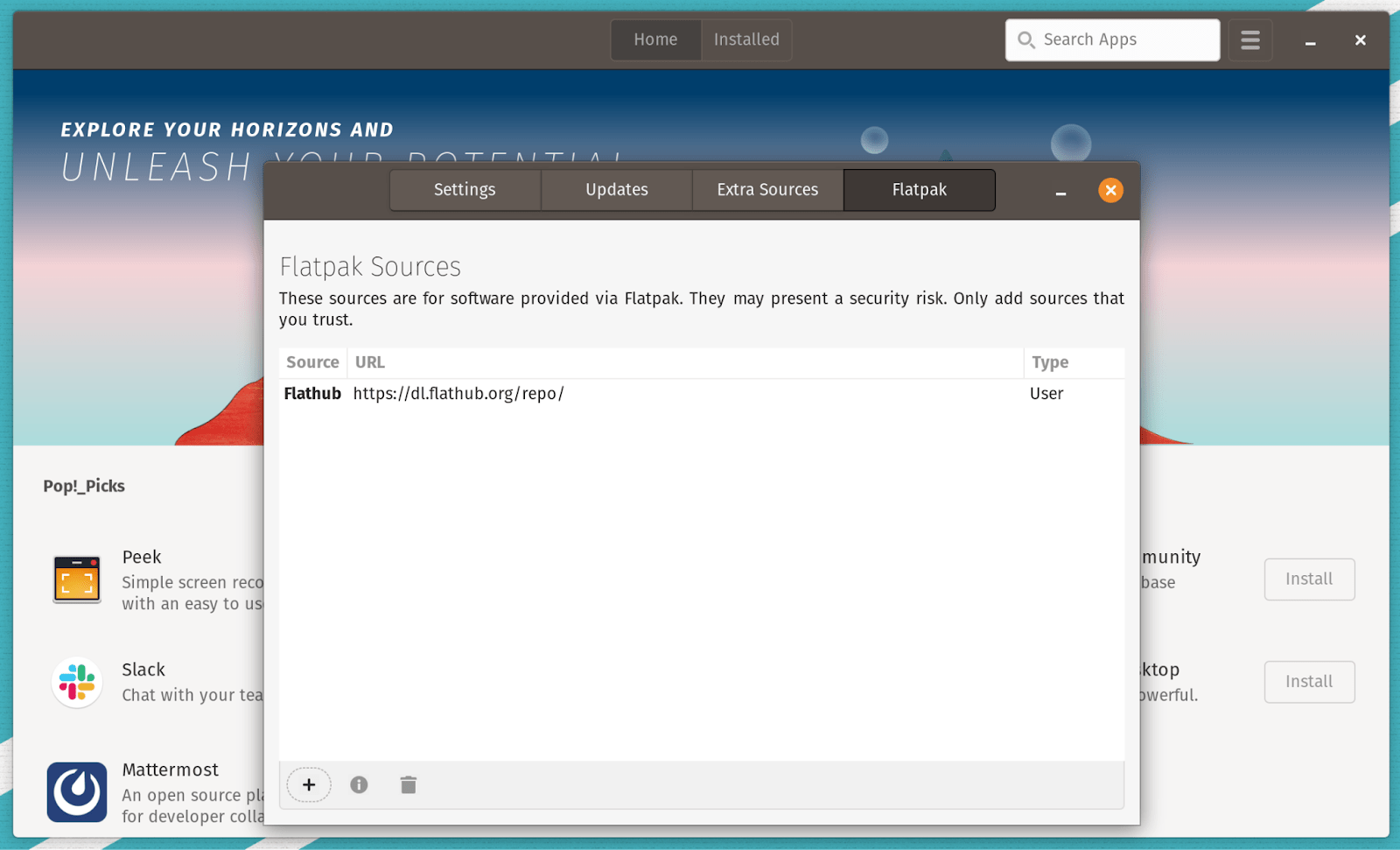
The software center allows you to choose between DEB and Flatpak versions for the same software whenever they are available, and will display you the software information accordingly:

Works well on both ends.
You can browse a list of the Pop!_OS packages from the following URL.
Miscellaneous Aspects
The distribution ships with a small utility to burn ISO images on USB drivers called Popsicle:
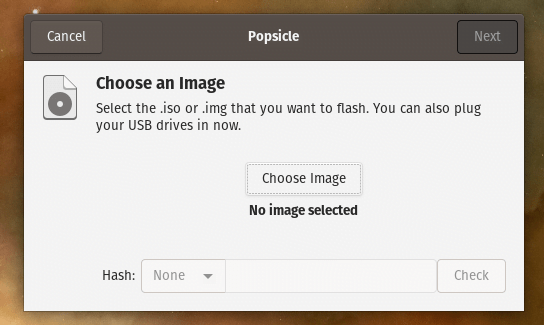
The control center, which is a modified version of GNOME control center, includes a section for controlling automatic system updates, and at which times they should happen, if ever at all:
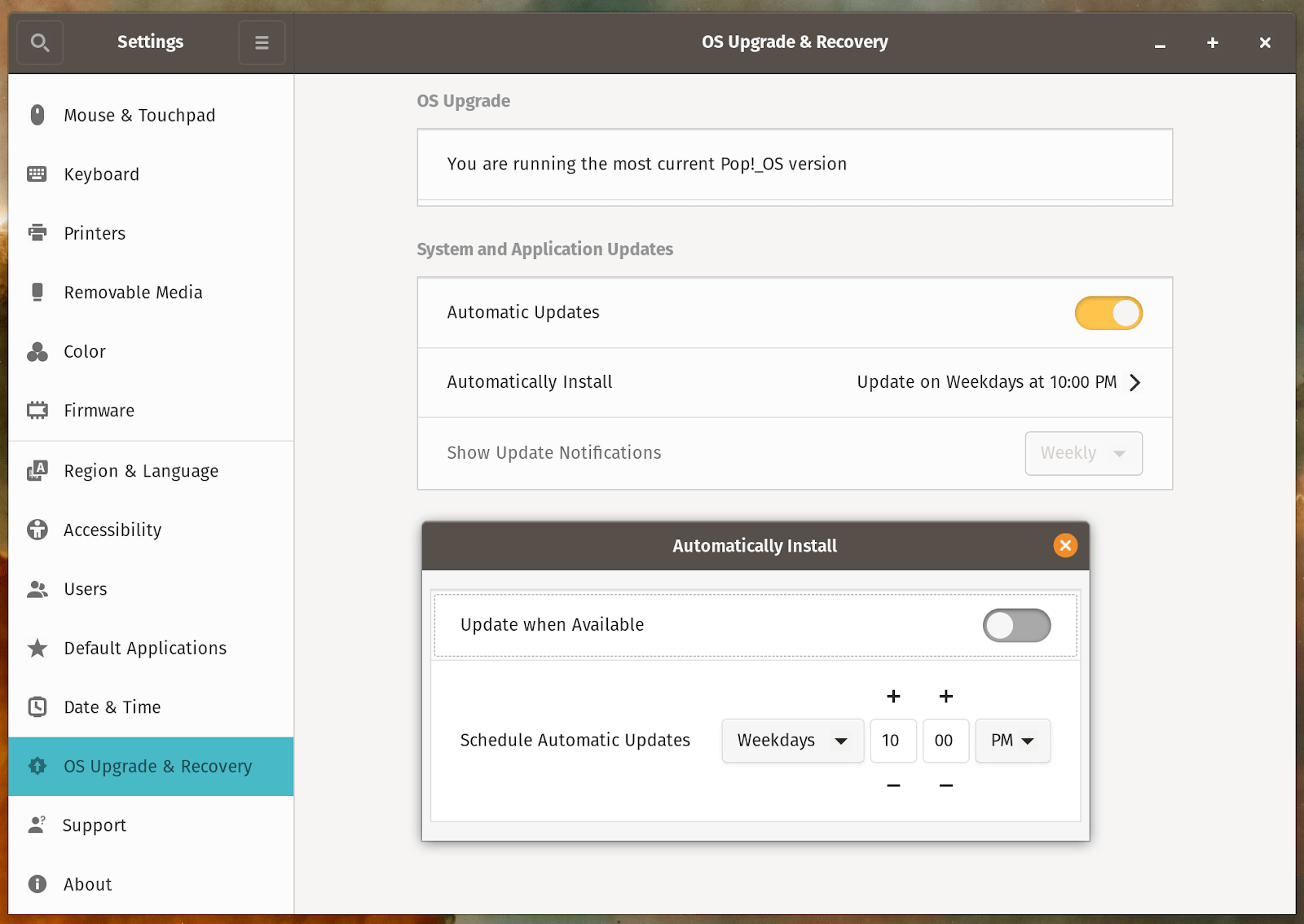
The dock can be customized or even disabled, however you wish, from the control center:
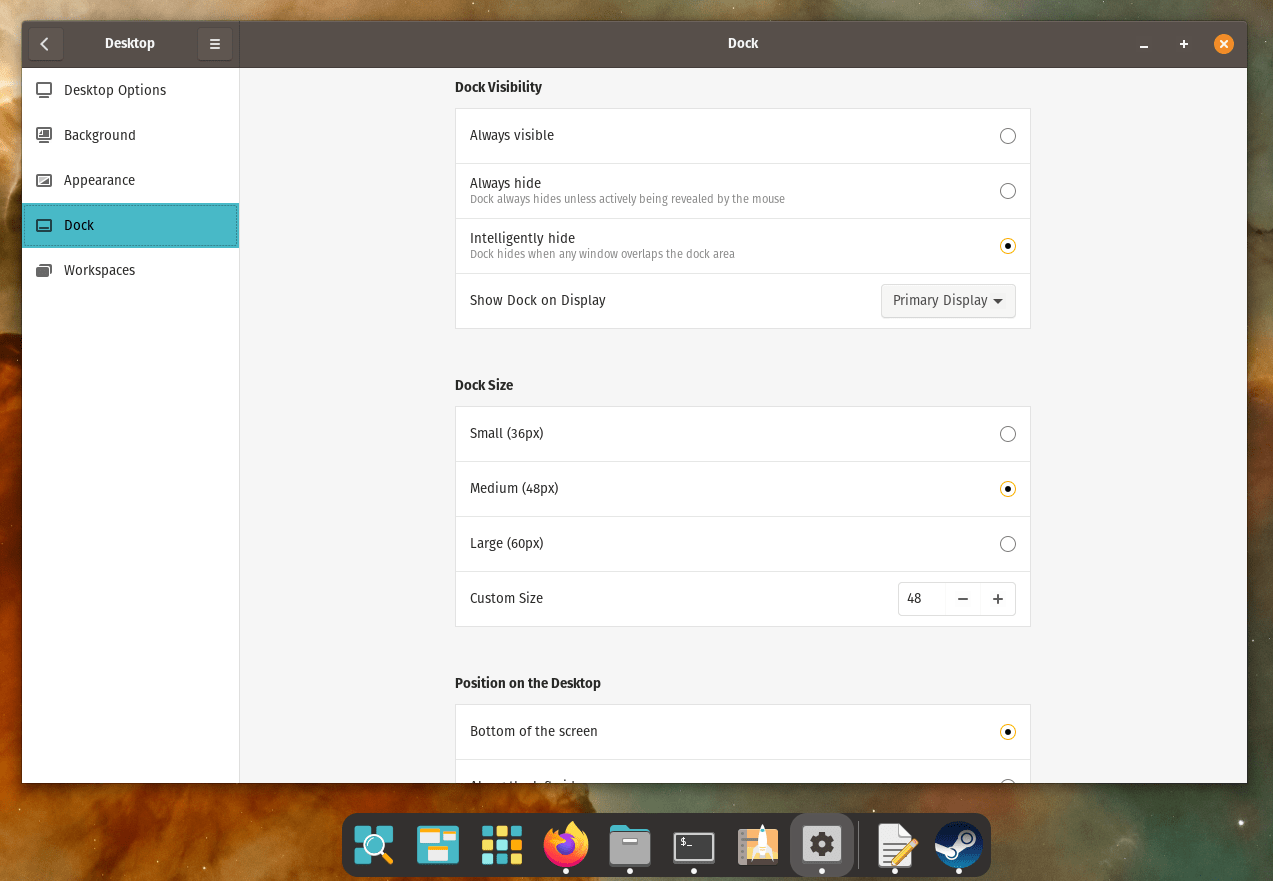
Sadly, there doesn’t seem to be a way to display Celsius degrees in the weather widget which appears in the date and time applet on the panel. You can choose Celsius degrees in the weather app itself instead of Fahrenheit, but not the panel applet:
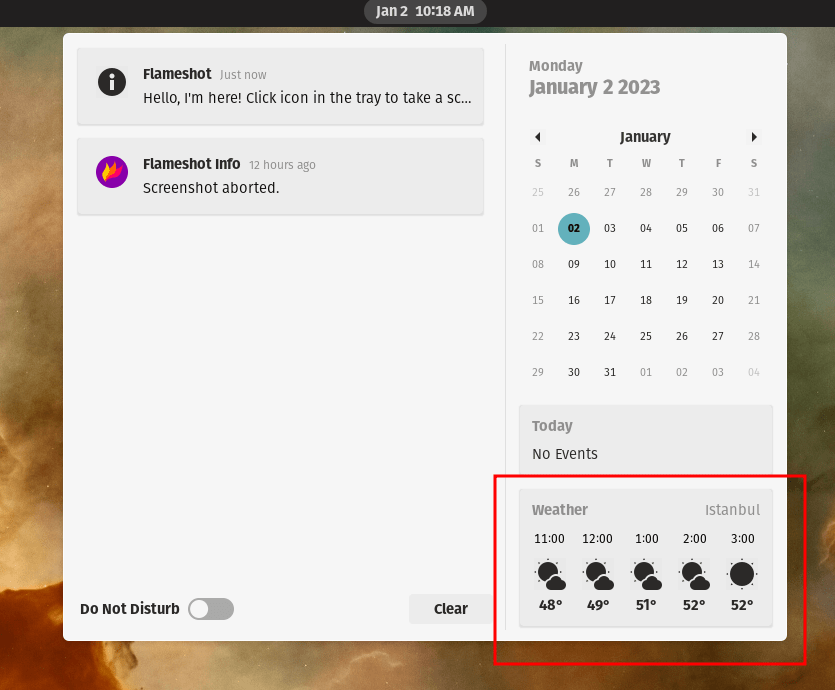
We also have to say that nothing’s perfect; the distribution has some issues when it comes to fractional scaling. If you set the scaling level in the control center to %125, then you will notice that some apps like Steam will become very small (included banana for scale):
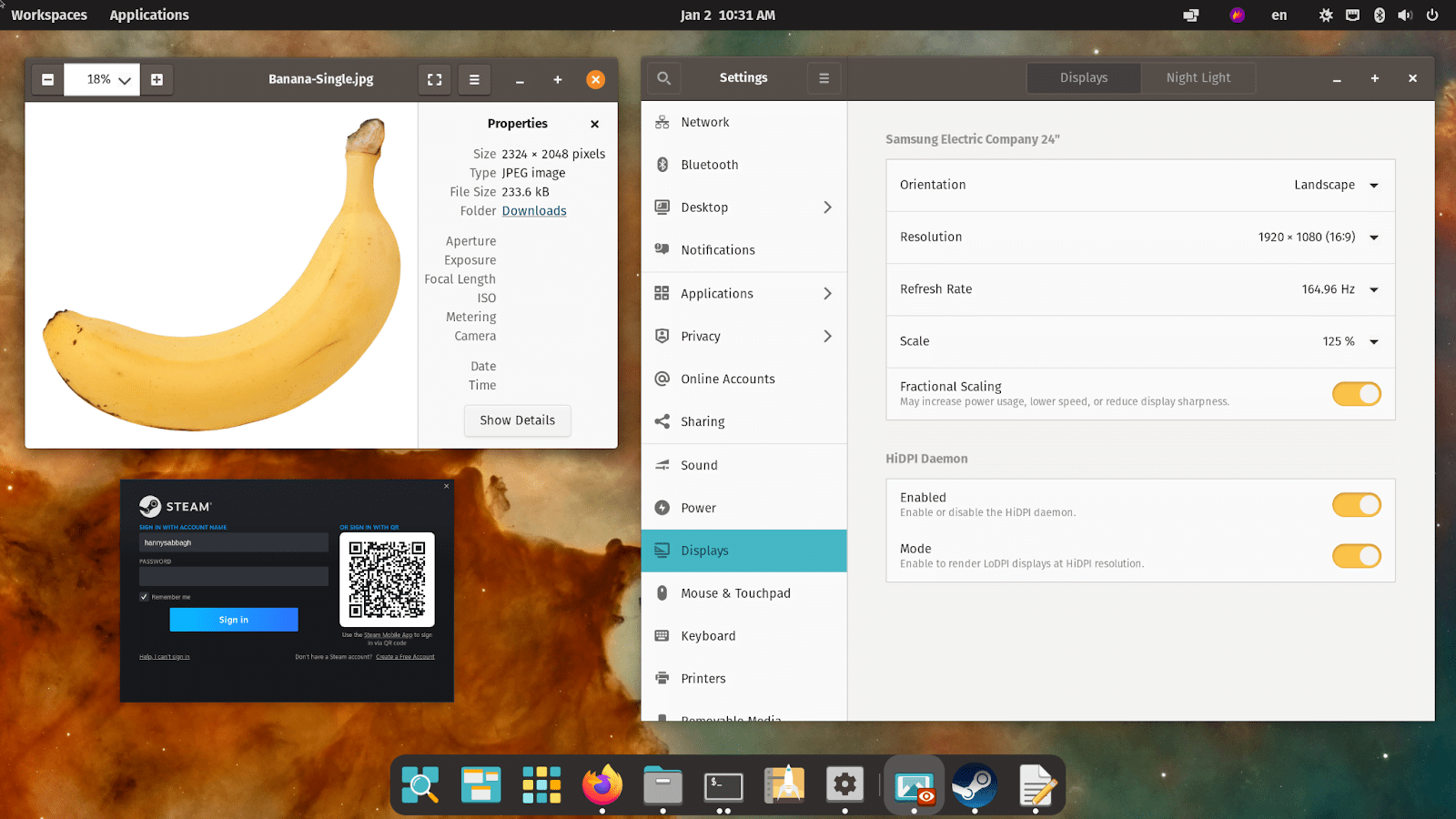
This is not just about steam, even Flameshot, the famous screenshotting tool, can no longer be used with this scaling level:
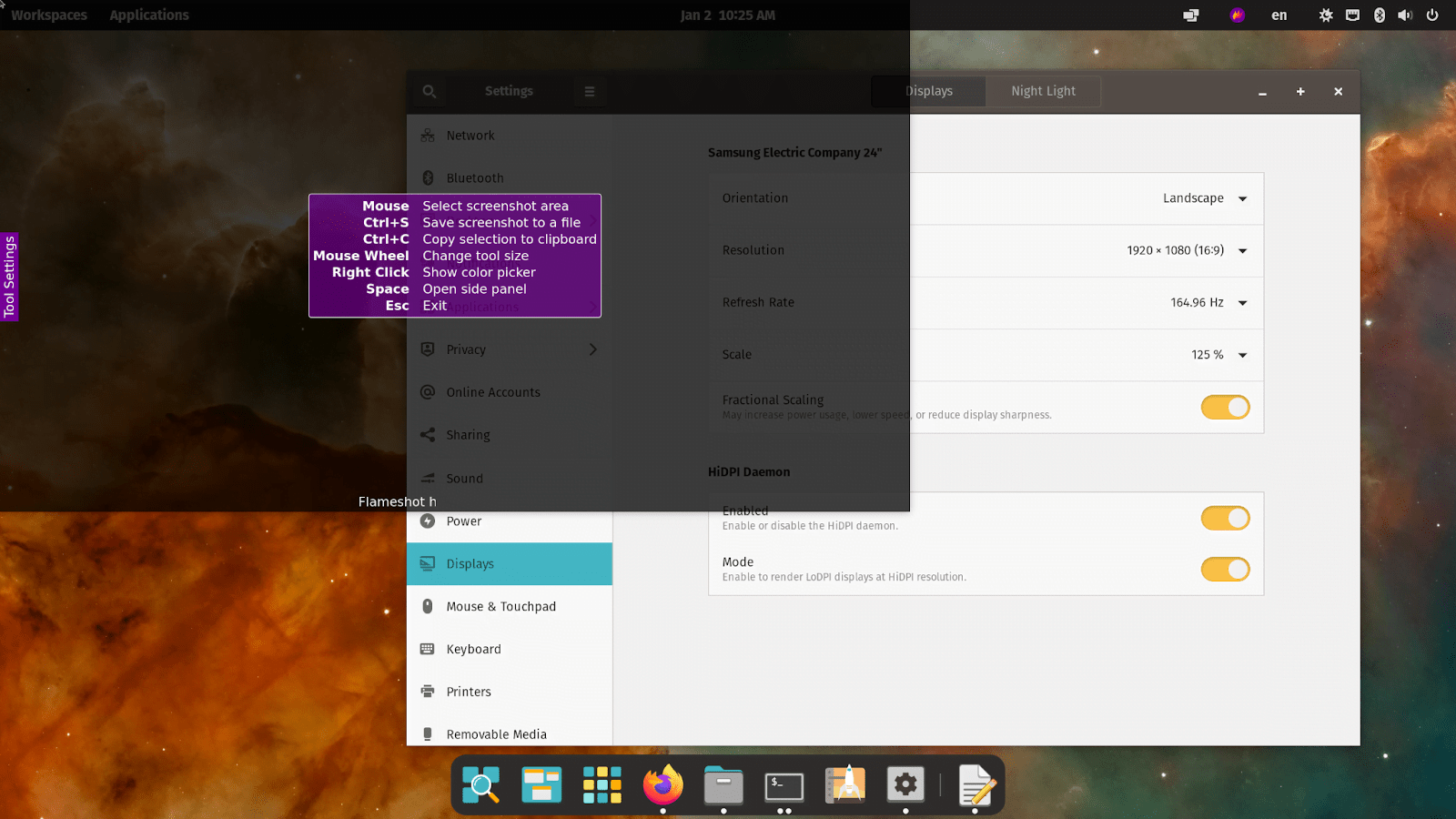
We are not sure at the moment if this applies to all hardware, or just an issue with the AMD RX580 graphics card drivers we are using. We were, however, able to reproduce the bug as well on Ubuntu 22.04 with GNOME 42, so this bug may not be related to Pop!_OS alone, but from the upstream.
Under the Hood Changes
There are some key features related to Pop!_OS which can not be seen by the human eye.
The default Linux process scheduler, for example, has been altered with a customized one from System76’s development to provide a more robust scheduling. In their own words, they say:
Scheduling service which optimizes Linux’s CPU scheduler and automatically assigns process priorities for improved desktop responsiveness. Low latency CPU scheduling will be activated automatically when on AC, and the default scheduling latencies set on battery. Processes are regularly sweeped and assigned process priorities based on configuration files. When combined with pop-shell, foreground processes and their sub-processes will be given higher process priority.
This is useful for desktop responsiveness, or at least, how the user feels desktop responsiveness. And you can see a small benchmark for how their customized CPU scheduler affects performance.
Another thing that may go unnoticed, is that disk encryption is enabled by default in Pop!_OS during installation. The user doesn’t need to do anything; the disk is already encrypted and you can just use your OS normally.
This is a great deal for security, say in cases where your laptop may be stolen or the police raid your house because you posted something on Twitter. In which cases no one will be able to access your critical files and data except you. Well, at least in theory:

These are not the only under-the-hood tweaks in Pop!_OS. For example, the team is also working on an optimized Zram configuration that would make it possible to gain additional performance under some workloads, but it didn’t land in 22.04 yet as far as we can tell.
Sadly not all of these changes are documented in one place. We had to go through a System76 developer’s entire Reddit history in order to collect information about some changes done on the distribution, and we also had to look at some source code packages on GitHub to understand how the distribution was tweaked from the original Ubuntu. So perhaps it would help if they updated their outdated documentation pages about the distribution on their site.
Hardware Support
If your system is powered by a NVIDIA GPU, then NVIDIA drivers will be automatically installed for you during Pop!_OS installation.
You can also toggle which GPU you want to use in your system in case you had an integrated graphics and a dedicated one (NVIDIA Optimus):

Pop!_OS 22.04 uses around 1.4 GB of RAM after a fresh boot:
mhsabbagh@pop-os:~$ free -m
total used free shared buff/cache available
Mem: 15907 1436 13660 2 811 14189
Swap: 0 0 0
And boots in around 9 seconds on a normal SSD:
mhsabbagh@pop-os:~$ systemd-analyze Startup finished in 5.603s (kernel) + 9.403s (userspace) = 15.007s graphical.target reached after 9.372s in userspace
This review was done on the following hardware:
- CPU: AMD Ryzen 1600, 6 cores and 12 threads.
- GPU: Asrock AMD RX 580, 4GB of VRAM dual-channel.
- RAM: 16GB OF DDR4 RAM, 3000MhZ.
- Motherboard: ASUS Dragon B450M.
- SSD: Apacer Panther AS340 240GB SSD.
Conclusion
So overall, these were our reasons for choosing Pop!_OS 22.04 as the finest desktop Linux distribution released in 2022. Nothing is perfect and some edge cases on some hardware may be overlooked like we have seen in the fractional scaling issue (and it’s coming from upstream too), but aside from that, it can be objectively said that a lot of work went into making this distribution, and that it is perhaps one of the most changed, tweaked and modified Ubuntu-based distributions out there.
Pop!_OS is not just a skinned Ubuntu distribution. Very far from that, actually, it is a complete platform on its own with a lot of special software and helpful gadgets.
If you are looking for a new Linux distribution to try, then we definitely recommend Pop!_OS 22.04 for you. You can go ahead and download it for free from its official website.
Congratulations to System76 and the dev team!
P.S: Subscribe with us in our Patreon campaign if you would like to see more detailed reviews like this one on FOSS Post each month.
Pop!_OS 22.04
-
Available software
-
Creativity & Inventing
-
Daily Use Purposes
-
Stability & Bugs
-
Customizability
Summary
Pop!_OS 22.04 is a fantastic Linux distribution which has been heavily modified to provide the best experience for power users. It ships with a lot of custom software and tweaks, making it one of the best Ubuntu derivatives out there.
Although mainly developed by System76 for their own hardware that they sell, it can be used like any other normal distribution on any suitable hardware. Additionally, many users report that it was able to revive their older hardware thanks to the CPU tweaks done on it.
It has a fantastic future as one of the best Linux distributions out there for professionals and creators.
Pros
- Customized Linux desktop, allowing a more efficient management of activities.
- Tiling windows support out-of-the-box.
- Keyboard shortcuts for everything, which is a big plus for keyboard-driven people.
- Graphics drivers are automatically installed, with the possibility to toggle dedicated/integrated GPU when needed.
- Nice default theme and fonts.
- Under-the-hood changes for CPU performance and desktop responsiveness.
- Full disk encryption automatically during installation.
- Flatpak and Flathub support out-of-the-box in the software center.
Cons
- Fractional scaling has bugs, on some AMD hardware at least, but this is not limited to this distribution.
- Not very great documentation for the work implemented, or the current state of development.
Hanny is a computer science & engineering graduate with a master degree, and an open source software developer. He has created a lot of open source programs over the years, and maintains separate online platforms for promoting open source in his local communities.
Hanny is the founder of FOSS Post.
